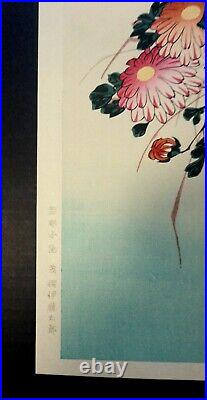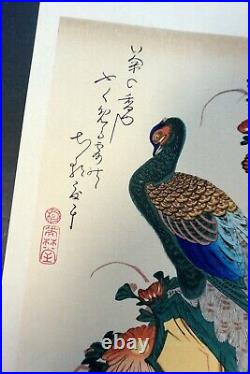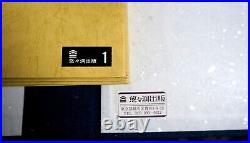







Details please touch with us. Hiroshige”KACYO FUGETU”. Hand pulled woodblock prints. Approx, 16″ x 7.7″ (40.5 x 19.5cm) actual. Echizen Kizuki Hosho? (hand pulled). (Picasso used “Echizen-washi” regularly). The paper has just slight natural discoloration due to passing age, the color is a bright color. Title: Peonies & the Phoenix? At the age of 13, he inherited the family estate and lost his parents at the same time. At 15, he became a disciplined Utagawa Toyohiro and took on the name Hiroshige. His teacher Toyohiro passed, and Hiroshige published Famous Places in the Eastern Capital in 1831, and the next year in 1832 published The Fifty-three Stations of the Tokaido, his masterpiece. This firmly established his status as a landscape artist. From that point on, he received commissions one after another. He worked on many pictures of famous places, rich in poetic sentiment, including The Sixty-nine Stations of the Kiso Kaido, co-created with Heisai Eisen. In his final years, he released the culmination of his artistic skill, One Hundred Famous Views of Edo, as his last crowing achievement. Details and colors of the images might be slightly different from those of real products, due to the light or vary on your computer’s monitor setting.
